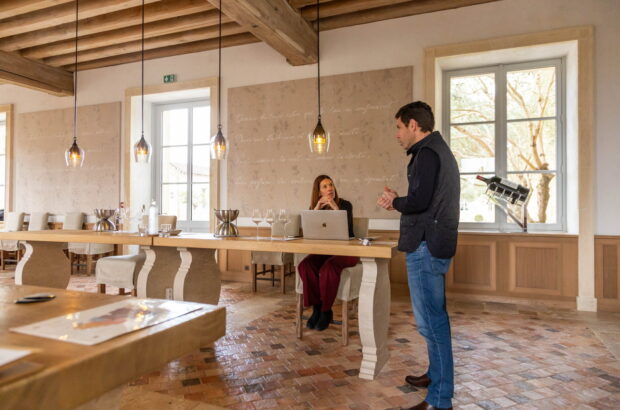Italian-born Giuseppe D’Aniello was recently named ‘The Best Sommelier, UK 2023’ by the UK Sommelier Association. His 10 years’ experience in the industry includes a period as head sommelier at London hotel The Lanesborough before joining The London Edition and Berners Tavern, where he is director of wine.
I still remember the boring, high-yield Cabernet Franc that characterised the grape’s presence on the market just a decade ago. This grape variety was largely unfamiliar to consumers, and typically used in small percentages to complete a blend of better known international grapes. It is one of the grapes that was underestimated in the past, for sure – but is now becoming fashionable. And that is something to be thankful for!
Inevitably, Cabernet Franc has been overshadowed by the more famous Cabernet Sauvignon and Merlot grapes in Bordeaux, where it is added into many blends to amplify a wine’s freshness and tannins. But it is the star of the show when vinified alone, as in the Loire appellations of Chinon or Saumur. You’ll also come across varietal examples from the US and Italy; and you’ll even find it made into icewine in Canada! These myriad expressions are what makes the Cabernet Franc grape so fascinating to me.
Perfume & power
In the last few years, Cabernet Franc producers have started to focus more on quality rather than quantity, leading to a significant shift in styles. It can be elegant and fresh, showing lovely red fruit aromas, when made in cool-climate areas such as the Loire valley; or robust and bold with black fruit notes when hailing from warmer climes such as California or Tuscany. In terms of structure, the variety has naturally high tannins (even if less than Cabernet Sauvignon), and the acidity is usually high and zesty, making the grape so versatile when it comes to food pairing.
My favourite expression of Cab Franc is the one coming from the Loire – and more specifically from Saumur-Champigny. The Cab Franc from here has red fruit aromas such as wild strawberry and sour cherry, notes of dried roses and spice aromas, with the high acidity and firm tannins that make the wine suitable for ageing. It’s savoury and earthy but at the same time delivers amazing perfumes – it’s a winning combination, and just gorgeous to drink, with or without food. If you are looking to pair it, I love to serve it with pasta cooked simply with tomato sauce, or with lamb cutlets served with tenderstem broccoli.
Discover Cabernet Franc: D’Aniello’s three to try
First, a varietal wine from the Loire: Fabien Duveau’s Les Bas Poyeux, Saumur Champigny 2020 (£19.49-£20.75 All About Wine, Cellar Selected). The greater Les Poyeux vineyard is home to some of the finest red wines in all of the Loire valley, its limestone and clay soils producing wines with a particular minerality. Aged in concrete and large casks, this wine has a lovely purity, showing a mix of black berries with a very integrated earthy component and touch of spice.

For a New World expression of the variety, head to California. La Jota Vineyard’s Howell Mountain Cabernet Franc 2017 (US$90-$112 Atomic Liquors, Dogwood Superstore, MyWinePlus) is made using fruit from some of Napa Valley’s oldest Cabernet Franc vines. It produces a structured wine, with black cassis, notes of liquorice and some sweet spice.

Last but not least, something for the sweet-toothed among you: red icewine. Leading icewine producer Inniskillin manages to preserve the earthiness and savoury notes of the grape variety, alongside the red and tropical fruit flavours, in its opulently sweet Cabernet Franc Icewine 2019 (£63-£74.50/37.5cl Drinks Direct, Hic, The Fine Wine Co, Vinvm), from Canada’s Niagara Peninsula.













